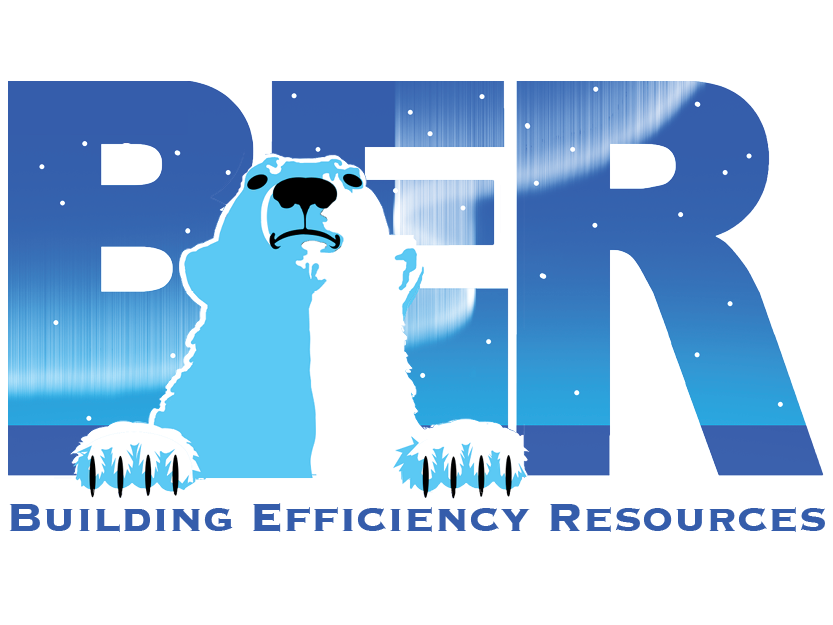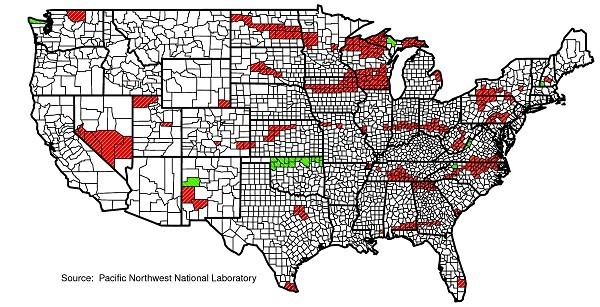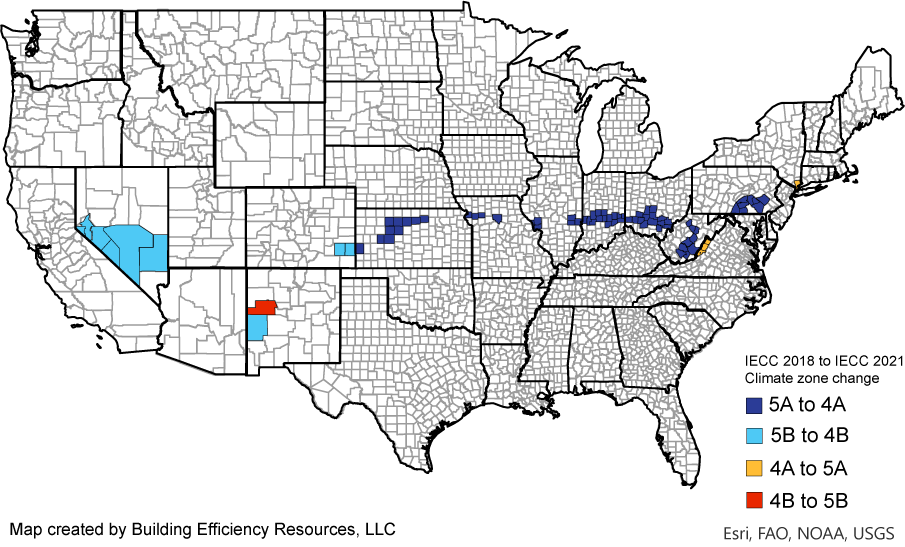2021 IECC Climate Zones and Implications for ENERGY STAR Updates
Are you working in a new Climate Zone?
Last month, the EPA finalized the new program requirements for Single Family Version 3.2 and Multifamily Version 1.2, and formal release is anticipated this coming fall. These program updates align with the 2021 IECC codes and thus will be implemented in states that adopt the 2021 IECC or an equivalently stringent code. Several states and cities have already adopted 2021 IECC, including Nevada and Maine (stretch code). Others are expected to follow suit soon: such as Vermont, Washington state, Illinois, Colorado, and Massachusetts (stretch code).
IECC 2021 – Climate Zone Changes
In December 2020, the IECC updated the Climate Zone map as part of the 2021 IECC codes. While this is an important update in general, understanding these changes has become vital with the adoption and expected adoptions of 2021 IECC codes and the new proposed ENERGY STAR programs. With this change, approximately 10% of counties within the U.S. are now classified in a new Climate Zone (Johns Manville Blog).
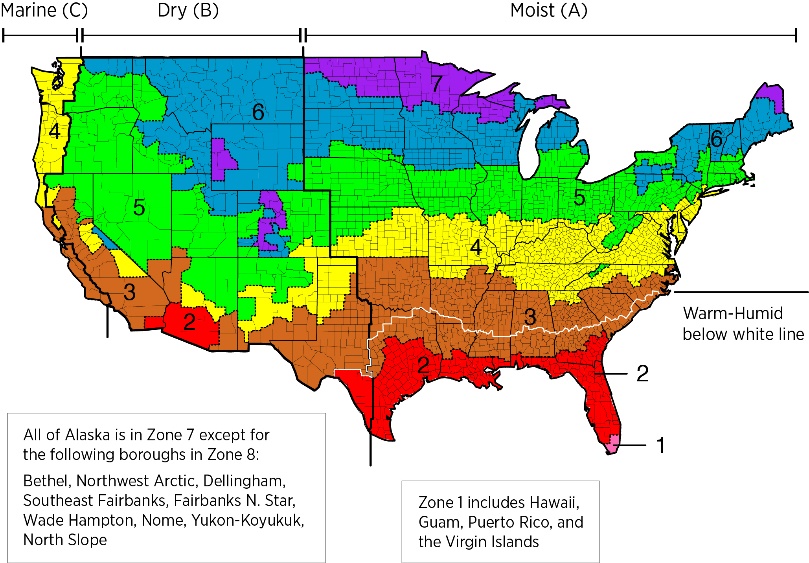 IECC 2018 Image courtesy of energy.gov Building America Solution Center.
IECC 2018 Image courtesy of energy.gov Building America Solution Center.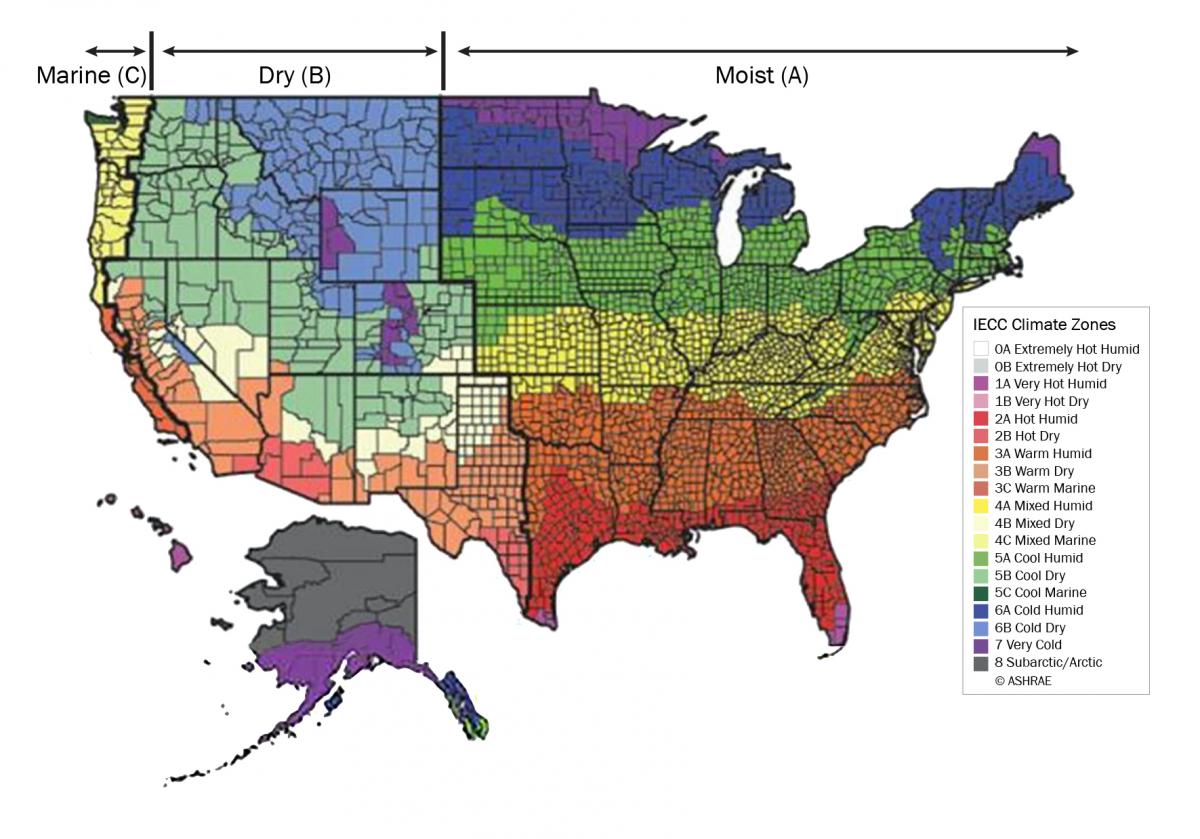 IECC 2021 Image courtesy of energy.gov Building America Solution Center.
IECC 2021 Image courtesy of energy.gov Building America Solution Center.Affected Counties
Several highly populated areas are affected by these changes including Dallas/Fort Worth, Nashville, Southern Wisconsin, and Northern North Carolina, which all shifted to warmer Climate Zone classifications. A few select counties shifted to cooler Climate Zone classifications, most notably Northern Oklahoma. The map below from Pacific Northwest Nation Laboratory highlights all counties that have undergone Climate Zone changes, with red showing a shift to lower (warmer) Climate Zones and green indicating a shift to higher (cooler) Climate Zones.
Implications
As a result of these Climate Zone updates from the IECC, industry professionals in the affected counties must ensure that homes are being built to the correct standards of their new Climate Zone designation. If you are working in one of the counties with a new Climate Zone under IECC 2021, you are going to want to keep an extra watchful eye out for the implementation of ENERGY STAR SFNH v3.2/MFNC v1.2 and make sure you know when you are working in a new Climate Zone.
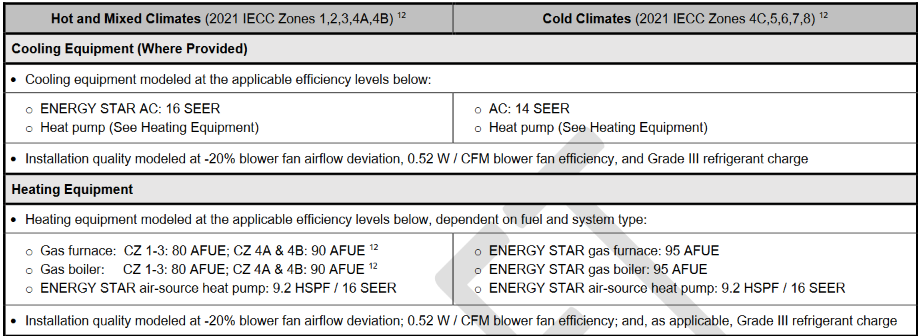
From the ENERGY STAR SFNH v3.2 draft, shown above, we see the differentiation of requirements for Cooling and Heating Equipment between ‘Hot and Mixed Climates’ and ‘Cold Climates’. The change of IECC Climate Zones is of highest important for counties that have changed from 4A/B to 5A/B, or vice versa, as this alters which climate category requirements must be followed for the upcoming ENERGY STAR versions. Programs like ENERGY STAR assign certain requirements for home airtightness and equipment efficiencies required per Climate Zone as well, and thus the stringency of compliance with those programs may change.
The practical implication of these changes for HERS Raters and their customers is that when a Climate Zone changes, it may impact the stringency of certain efficiency measures that must be implemented to achieve energy code or program compliance. For example, Prescriptive building insulation requirements vary by Climate Zone for energy code compliance, affecting not only Prescriptive compliance, but also UA tradeoff and Simulated Performance compliance.
Practically speaking, since most counties changed to warmer Climate Zones, this will in effect result in lower levels of stringency for energy code and program compliance within these regions.
Learn More
Learn more about the updates included in the 2021 IECC from the Ekotrope Blog, or read Chapter 3: General Requirements from ICC. You can also visit ENERGYSTAR.gov to read the latest draft releases for the upcoming Single Family New Homes v3.2 and Multifamily New Construction v1.2.


